


|
Terrain Tutorial Index
A TGA Library
Height Maps
Lighting
Artificial Terrain Generation
Mid Point Displacement
Smoothing |
| [Previous: Screen Shots] | [Next: Implementation Details] |
Terrain Tutorial
The Fault Algorithm
This algorithm is a very simple one, yet its results, although not the best, are pretty good. The technique is not limited to planar height fields, being also applicable to spheres to generate artificial planets. Paul Bourke and Hugo Elias have posted tutorials on the application of this algorithm to spheres.
To start with we'll have a planar height field, where all points have zero height. Then we select a random line which divides the terrain in two parts (in general these parts will be different in size). The points to one side of the line will have their height displaced upwards, whereas the points on the other side will have their heights displaced downwards. The following image illustrates the first iteration of the technique.

The red points will have their height decreased, whereas the blue points will have their height increased. So now we have a terrain with two distinct heights. If we keep dividing the terrain like this then we'll get something that has valleys, mountains and so on (or at least we can imagine them!).
The following images show how the terrain height map evolves as the number of iterations increases.
| 1 iteration | 2 iterations | 3 iterations | 4 iterations |
 |
 |
 |
 |
| 8 iterations | 16 iterations | 100 iterations | 400 iterations |
 |
 |
 |
 |
OK, now lets look at the terrain itself after the same number of iterations.
| 1 iteration | 2 iterations |
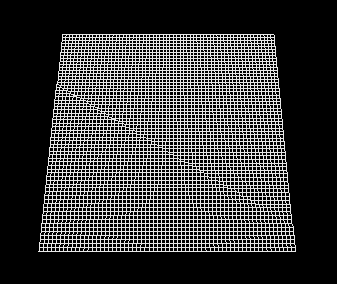 |
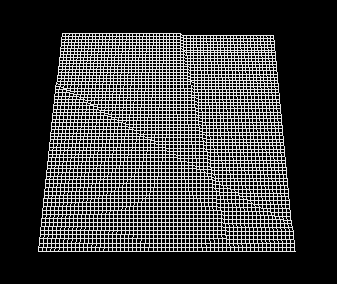 |
| 3 iterations | 4 iterations |
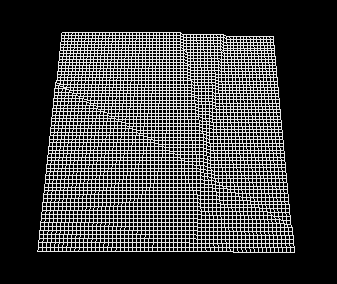 |
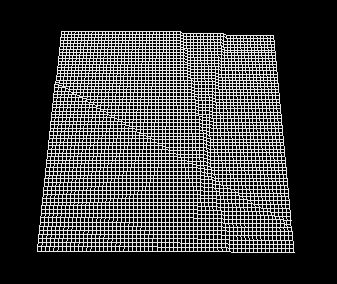 |
| 8 iterations | 16 iterations |
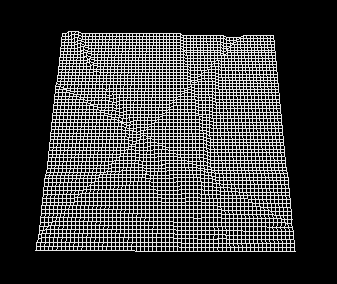 |
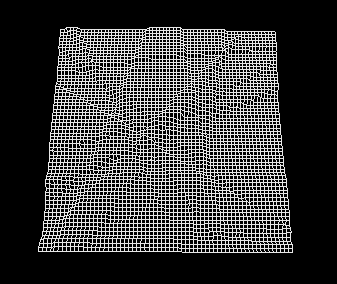 |
| 100 iterations | 400 iterations |
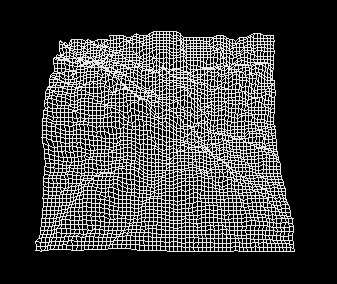 |
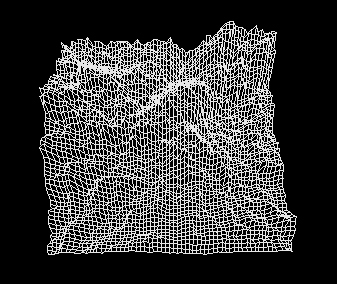 |
| [Previous: Screen Shots] | [Next: Implementation Details] |